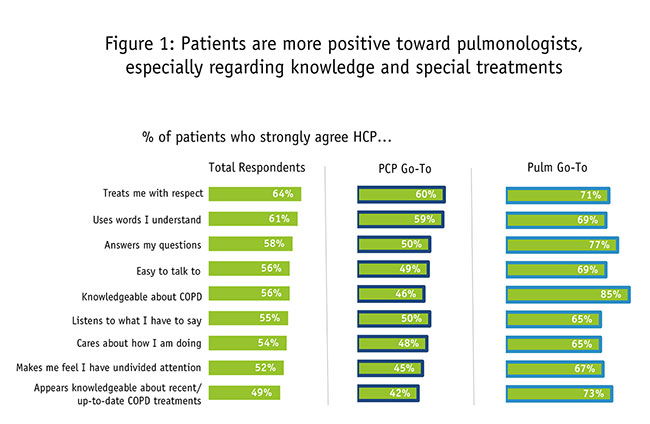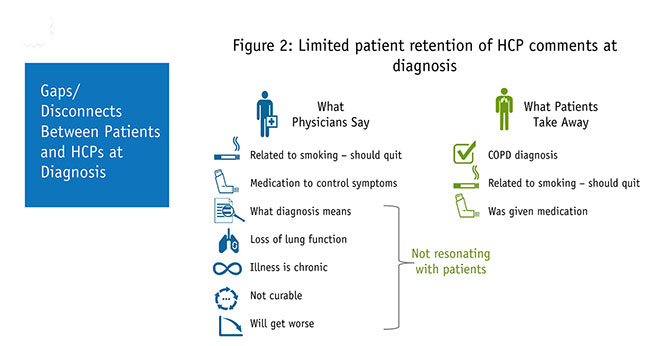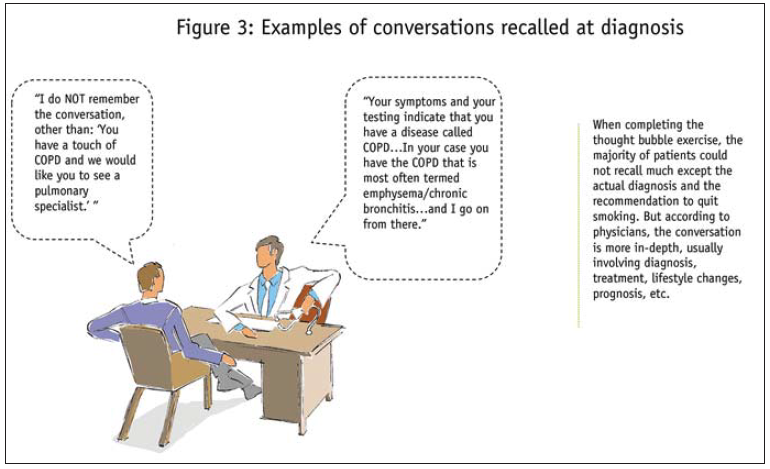There's a disconnect here
Editor's note: Jonathan Weiser is VP, healthcare practice lead at New York-based research firm BuzzBack.
Twenty minutes, tops. That’s the average interaction between doctor and patient in a typical office visit. But what if it’s not typical because the patient has just been diagnosed with a disease? Discussions regarding diagnosis, treatment, possible medication and recommendations may occur but it’s hard to understand what is resonating with patients who are given so much information in such a short period.
We know gaps in communication occur and effective patient-physician communication is often linked to adherence. In fact, our study on adherence last year found that at the point of diagnosis, patients frequently leave a physician’s office not knowing what condition the doctor diagnosed, not clear on what they should do and not even knowing if they’ve gotten a prescription. Research has shown that comprehension, retention and action can improve through the use of visual stimuli in physician-patient interaction.1,2,3 We’ve also found visual stimuli to be highly effective when uncovering patient and practitioner insights. Using images as catalysts helps engage study participants and can also help them open up around a sensitive topic to further identify what’s driving behavior and emotions around treatment.
For our communications gaps study, we partnered with one of the top 25 pharmaceutical companies to conduct qual-quant research with chronic obstructive pulmonary disease (COPD) patients and health care providers to find out how both sides viewed their relationship and what communication gaps exist before diagnosis, at diagnosis and as treatment continues.
The online methodology integrated interactive exercises – including a retrospective diary, projective thought bubbles and a collage-building tool – with standard measures in order to explore this relationship. More specifically, we looked at what doctors believed they were communicating effectively and what information patients were really retaining. We asked about experiences with COPD, the point of diagnosis, experiences with their PCPs and communication around medication.
Uncovering true feelings
First, we explored the relationship between patients and physicians. Neither are likely to find out how the other really feels in person, but uncovering true feelings is of utmost importance in understanding why gaps occur and what can be done to overcome them. Findings revealed both patients and physicians were mostly aligned when it came to frequency of visits and amount of time spent together. However, how each side viewed the strength of their relationship differed; many doctors overestimated, with 91 percent agreeing their relationship with patients was strong, while only 65 percent of patients said the same.
Next, we aimed to understand the types of physicians patients chose as their go-to health care provider for managing COPD. Interestingly, the majority of patients (64 percent) said they frequented PCPs. Comparatively, only 24 percent chose pulmonologists, suggesting an underutilization of specialists. This is important to note as patients were later asked how they felt about the HCP who treated them and a higher percentage of patients treated by pulmonologists felt more positive towards their physician than patients treated by PCPs, especially regarding the doctors’ knowledge and being up-to-date on COPD treatments (Figure 1).

To describe how they felt about HCPs and COPD in general, patients created an eCollage, an online collage-building exercise used to elicit emotions and visual understanding. Patients mostly felt positive about their doctors, expressed via images illustrating HCPs caring, listening and answering questions. However, some collages revealed concerns patients had such as feeling rushed by doctors and the doctor not being helpful or not caring – possibly contributed by the type of doctor patients frequented.
On the other hand, doctors did not feel as positively towards patients. The study shows HCPs are frustrated with patients – with 70 percent finding COPD challenging to treat. Many patients continue to smoke, which only exacerbates symptoms, and HCPs don’t believe patients are doing their research on the disease, leading to their having a hard time understanding details around it.
So how can these disconnects in the relationship between patients and doctors be fixed? Marketers of pharmaceutical companies can enable a more proactive link between PCPs and specialists to foster patient dialogue. Patients can better understand their condition and the importance of seeing specialists to allay any fears and misunderstandings they have.
Overall relationship
The first part of the study provided insight into feelings of patients and physicians around the overall relationship but we really wanted to uncover the communication gaps occurring around the diagnosis of a disease. The study probed the period during which patients begin to experience symptoms. Here, both patients and HCPs agree there is considerable time between the moment patients first start to have symptoms and the moment doctors actually diagnose COPD. We asked patients about kinds of symptoms they experience and the emotions they feel. Generally speaking, patients say symptoms are usually not severe enough to lead to diagnosis, providing one reason for the lapse.
Next, we explored the key drivers of this disconnect among HCPs. Many HCPs say patients are in denial about their condition and they also hold off diagnosing the patient because they think it is too early to be completely sure. Another disconnect emerges in terminology used by patients and doctors. Specifically, the ways to refer to COPD symptoms and the condition itself vary, so it’s not surprising misunderstandings occur.
Marketers can step in here with informational campaigns to help create awareness of specific diseases to heighten sensitivity to symptoms. They can also develop strategies to encourage uniformity in visuals and language used in talking about COPD and symptoms. Both patients and physicians may be less unsure of the condition they have and can regain valuable time typically spent undergoing treatment.
Have intense emotions
The point of patient diagnosis may be most challenging. With new influxes of information, physicians want to convey as much as possible but patients have intense emotions and feelings; thus, only very little of what the doctor says at diagnosis is actually retained. For example, the study found 92 percent of HCPs recalled recommending patients quit smoking at diagnosis. However, only 64 percent of patients remember the same. The projective thought-bubble exercise also uncovered other details patients don’t recall, such as what the diagnosis means exactly, the fact that the illness is chronic and not curable, and that it will only get worse. Basically, the only aspects patients take away from the visit are the actual diagnosis and that they are given some kind of medication (Figure 2). Other details around treatment and next steps go unrecalled. But again, the importance of seeing a specialist (pulmonologist) results in a higher percentage of satisfied patients and those satisfied are more likely to retain information at diagnosis.

At such a crucial moment, marketers can help close communication gaps by connecting patients to support programs to reinforce disease management and they can build understanding around how to treat specific symptoms using visuals to illustrate benefits. As noted earlier, research has already proven visuals help patients retain information; by providing materials to HCPs and their offices for distribution, marketers can help patients be more likely to remember what they learn by giving them information they can refer back to at a more relaxed time.
Gaps still occur
In the visits that follow diagnosis, are patients more likely to recall what they are told? Results from the study reveal unfortunately, communication gaps still occur (Figure 3). HCPs say conversations that follow revolve more around symptoms patients experience, while patients recall mostly talking about medication. When patients are asked what they would like to talk about, they discuss needing broader input on overall health management and treatments. They seem little-informed about medications before they’re prescribed and many leave the doctors’ office with outstanding questions, particularly surrounding efficacy and treatment side effects.

When HCPs were asked what they tell patients about a medication, they focus more on instructions for using the treatment (how, how often to use, etc.) than on its efficacy and side effects. In fact, it is interesting to note an alarming 21 percent of patients recall only needing to use controller (daily) inhalers when experiencing symptoms, while 95 percent of physicians recall recommending daily usage. Again, fewer patients of pulmonologists are unclear on using inhalers, further reinforcing earlier findings of PCP vs specialist visits.
The patient disconnect around medication starts early. So how can HCPs ensure instructions are really getting through to patients? Here, marketers can address gaps related to overall health management by providing educational follow-up materials. They can also build awareness for materials and programs outlining steps for proper medication use and the benefits of doing so. Doing this takes the pressure off both sides and can lead to higher satisfaction among patients with doctor visits.
Understand what’s really going on
In sum, this study reveals the communication gaps between patients and physicians that run the length of the relationship – from before the diagnosis of an illness to the point of diagnosis and even as treatment continues. In addition, these gaps also prove to have an impact on adherence. However, getting behind reasons for disconnects can help us understand what’s really going on in patients’ minds and what’s driving behavior. While this study highlights patients with COPD, the same thoughts, feelings and suggestions can be applied to other diseases and illnesses. And as adherence continues to be a challenge among pharmaceutical companies, this research provides insights for marketers on how to develop strategies to fill gaps and improve communication between patients and physicians.
References
1 Kessels, 2003.
2 Annamiek, 2013. Journal of Crohn’s and Colitis.
3 Danielle M. McCarthy, et al. “Emergency department discharge instructions: Lessons learned through developing new patient education materials.” Emergency Medicine International.
